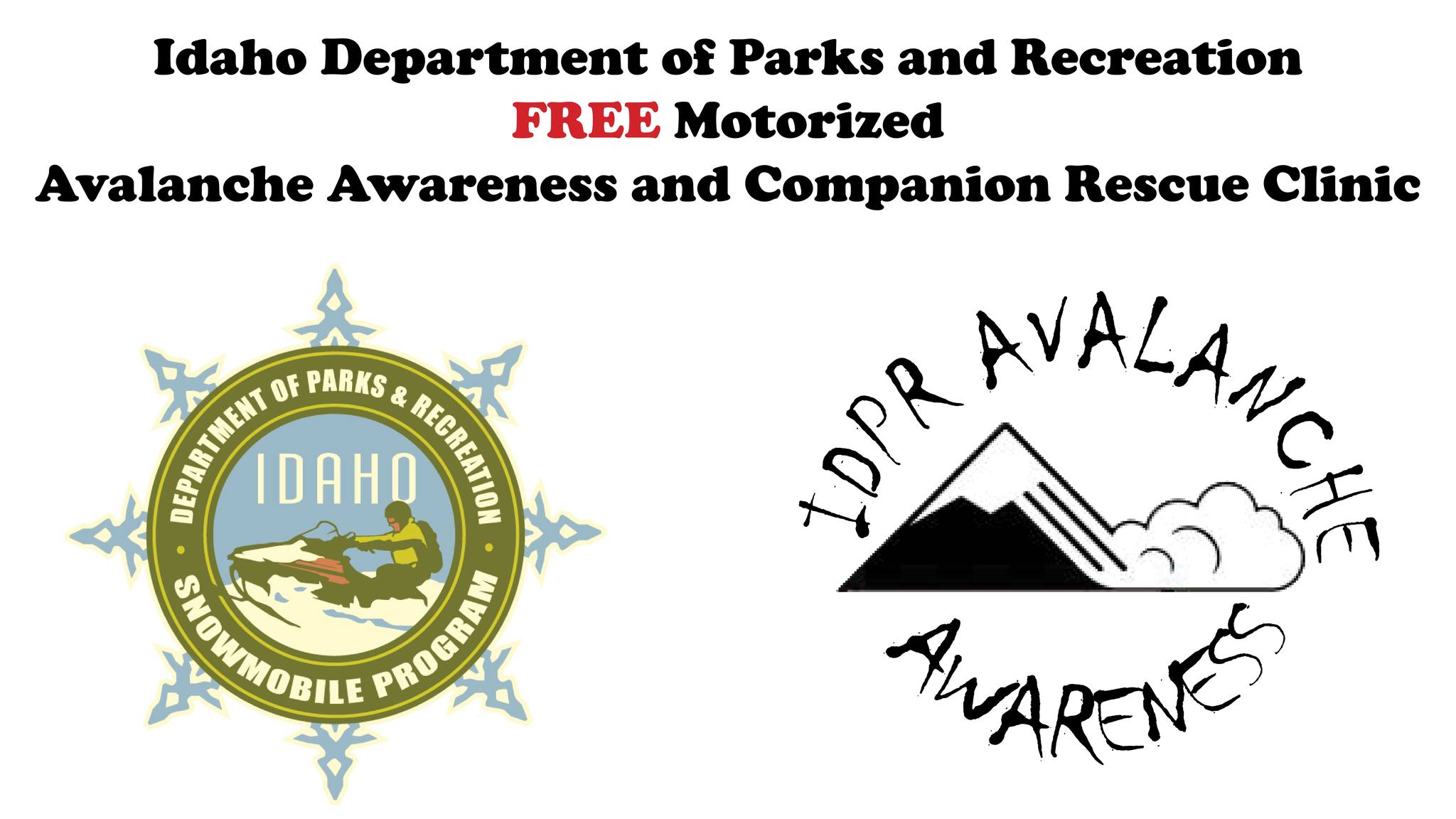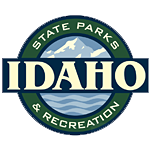
Avalanche Awareness Presentation
This is part one of two presentations in our avalanche safety education programs. Participation in the awareness presentation is required to attend the companion rescue clinic field training.
Please register at reced.idaho.gov
Since avalanches are the number one cause of snowmobile fatalities in the west, the Idaho Department of Parks and Recreation is presenting a free Snowmobile based Avalanche Awareness course.
Goals of this program:
Understand basic trip planning
– understand safe travel techniques
– be able to distinguish between safe and potentially hazardous terrain
– understand the basics of snow stability analysis
– be able to perform basic risk analysis and employ risk mitigation measures
– know how to perform individual and small group self-rescue.
Topics covered:
• Terrain
• Snowpack and Weather
• Decision making – support tools
• Rescue
What to expect: The program is divided into a classroom and field portion. Classroom sessions are a prerequisite to attend a field exercise.
The required item for field classes: Snowmobile with a current IDPR registration sticker
STEPS TO REDUCING YOUR AVALANCHE RISK
1. GET THE GEAR: Ensure everyone has an avalanche transceiver, shovel, and probe on their person and knows how to
use them.
2. GET THE TRAINING: Take an avalanche course. Get smart! The smart first step is to learn from the avalanche experts. This will take a commitment of time and effort on your part. Divide the task into three parts. First, take an avalanche course. Second, check out the videos on avalanche safety. Third, do some reading and expand on what you have learned.
3. GET THE FORECAST: Make a riding plan based on the current avalanche and weather forecast.
4. GET THE PICTURE: If you see recent avalanche activity unstable snow exists. Riding on or underneath slopes is dangerous. Identify avalanche terrain. Avalanches run repeatedly year after year in the same areas/slopes called avalanche paths. Avalanches most often start on slopes of 30-45 degrees but sometimes start on slopes as shallow as 25 degrees and as steep as 50 degrees. Knowing the slope angle is “rule number one” in recognizing avalanche terrain, for once slope angles reach 30 degrees, you are in potential avalanche terrain regardless of all other factors. Read nature’s signs. Sometimes the snow shows clear and present danger signs of an avalanche. Some signs are a fresh avalanche, snow collapsing beneath you or creating noticeable cracks. Some weather signs that the hazard could be worsening fast are heavy snowfall — more than one inch per hour — or strong winds creating blowing snow and snow plumes off the ridges.
5. GET OUT OF HARM’S WAY: One at a time on all avalanche slopes. Don’t go to help your stuck friend. Don’t group up in
runout zones. Travel smart. There are several rules of safe backcountry travel that will help to minimize your avalanche risk. One at a time. Only one person at a time should go onto the slope. Avoid the center. The greatest danger on any steep slope comes when you are in the middle of it. Stay on shallow slopes. You can always travel on avalanche-free slopes up to 25 degrees. Never ride alone.
6. UTILIZE YOUR RESOURCES.
• WWW.AVALANCHE.ORG
• Sawtooth Avalanche Center – (208) 622-8027
• Idaho Panhandle Avalanche Center – (208) 765-7323
• Payette Avalanche Center (208) 634-0409
7. TEST THE SNOW. Look for test slopes where you can dig snowpits and perform stress tests. A test slope is a small, steep slope, preferably 30 degrees or steeper, where you will not be in danger of causing an avalanche but is close to a larger slope that you are concerned about.
8. TAKE YOUR PULSE. In other words, check your attitude. It can get you in trouble. Are you so goal-oriented
to climb this peak or highmark that slope that you are willing to take the unwarranted risk? Do not overlook clear and present danger signs! Do not fall into peer pressure! Are you letting haste or fatigue get you in trouble? To prevent accidents from happening, you must control the human factor in your decision-making. Know your
limitations.
9. BE READY FOR RESCUE. There are three parts to the rescue equation that will reduce your risk: what equipment to carry, what to do if you are caught, and what to do if a friend is caught. Rescue gear. A snow shovel, probe, and transceiver are the items that everyone who goes into the backcountry should not be without.
Do not abandon the search or send searchers out for additional help: You are the buried victim’s best chance for survival.


